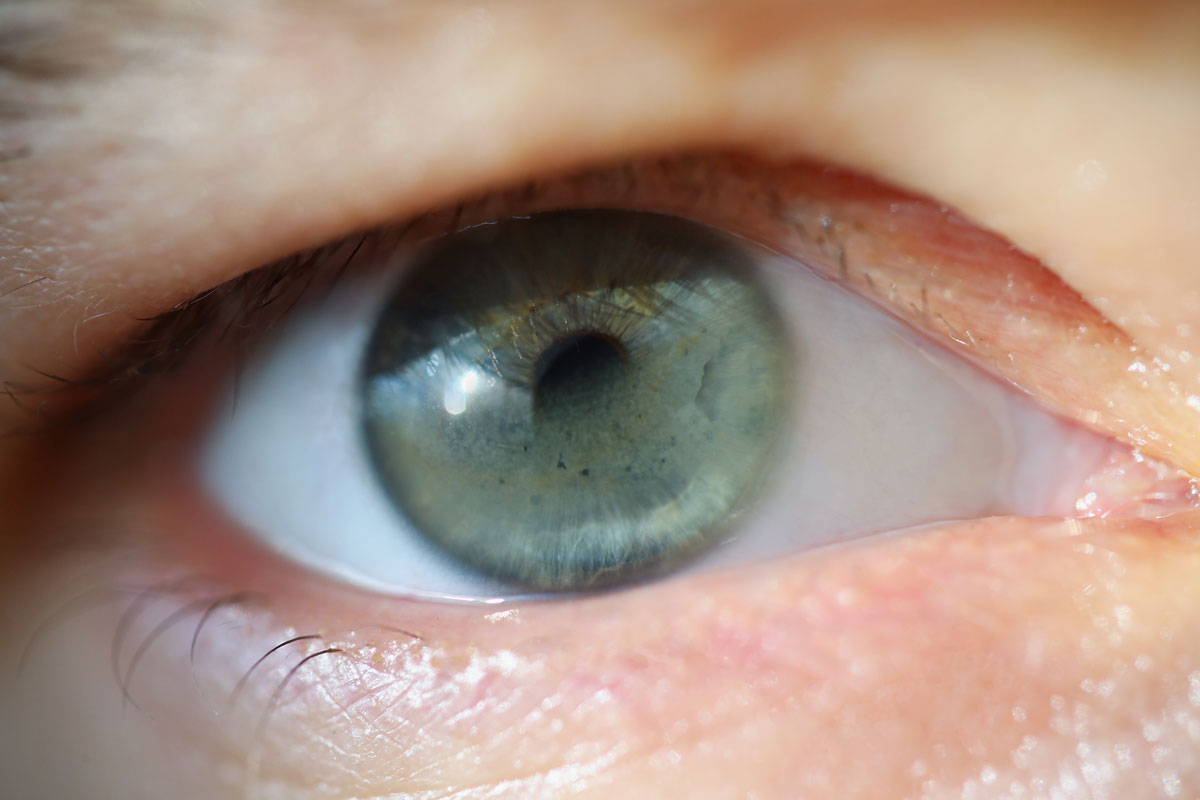Band keratopathy, also called calcific band keratopathy, involves calcium deposits that collect in layers of your eye’s cornea. This can happen when calcium levels in your body are unbalanced. The usual treatment is chelation.
Advertisement
Cleveland Clinic is a non-profit academic medical center. Advertising on our site helps support our mission. We do not endorse non-Cleveland Clinic products or services. Policy

Band keratopathy is a disease of the cornea of your eye. Keratopathy is a term for many conditions that affect your cornea. Your cornea is normally a clear dome. If you have band keratopathy, you have calcium deposits in some layers of your cornea.
Advertisement
Cleveland Clinic is a non-profit academic medical center. Advertising on our site helps support our mission. We do not endorse non-Cleveland Clinic products or services. Policy
Calcium, in the form of calcium salts, collects into a belt shape that typically starts on the outside of your cornea (peripheral) and moves toward the middle (center). The deposits collect as your cornea breaks down. This can happen if you have an eye disease or an illness, like an immune system disorder, that affects your entire body.
Other names for band keratopathy include band-shaped keratopathy (BSK), corneal band keratopathy and calcific band keratopathy.
Band keratopathy affects your cornea, which is normally clear and transparent. The calcium buildup makes it murky and dull.
When the deposits get thick enough, they can scratch your eyes. You may feel band keratopathy before you see it. Over time, this condition can cause low vision.
The calcium is normally located in the area of your eye that’s visible to other people when your eyes are open.
Signs and symptoms of band keratopathy include:
Advertisement
You can get band keratopathy when the calcium levels in your body are out of balance. Many conditions can cause band keratopathy. These include diseases that affect only the eye and diseases that affect your whole body.
Diseases of the eye that can cause band keratopathy include:
Disorders of the immune system that cause band keratopathy include:
You can have hypercalcemia (too much calcium in your blood) because you have other issues, including:
Some other conditions that may cause band keratopathy include:
If you have symptoms, you may start with a primary care doctor or go right to an eye care specialist. They’ll begin by asking you about your medical history and your symptoms to find out the cause of the calcific band keratopathy and to rule out other diseases.
They’ll also want to test your blood for levels of different substances, including:
An eye care provider will do a thorough eye exam that’s likely to include a slit lamp examination.
Advertisement
Chelation is the name of the most common treatment for band keratopathy. Chelation is a method of getting minerals or metals to bind to another substance. This allows your body to remove the bonded material.
In this case, providers remove calcium deposits in your eye by applying ethylene-diamine-tetra-acetic acid (EDTA). Your provider may use a laser to get rid of any remaining pieces of calcium and to smooth the area of your eye that was treated. This part of the process is therapeutic keratectomy.
A provider generally does the procedure as an outpatient procedure (you can go home the same day) under local anesthesia.
Your eye will need special protection for about two weeks after the procedure. Your provider may do an amniotic membrane graft or give you a bandage contact lens. An amniotic membrane is a specific type of tissue. A bandage contact lens is a soft contact lens. Both options offer protection.
If you have band keratopathy because you have an underlying condition, providers will treat the underlying condition so you don’t develop more calcium deposits.
For most people with band keratopathy, the prognosis is good as long as the underlying condition is treated. It’s not enough just to remove the calcium deposits. Deposits can happen again if you don’t correct the problem that causes the calcium issues.
Advertisement
You may be able to reduce your risk of developing band keratopathy by managing your overall health and your eye health.
This can include:
It’s important to pay attention to your eyes and the rest of your body. If you notice that something isn’t quite right, like your vision has decreased or you have eye irritation that won’t go away, call your eye care provider. The sooner you get help, the better the outcome is likely to be.
Healthcare providers are as concerned as you are about preserving your eyesight. That’s why it’s so important to contact a provider if you notice anything different about your eyes or problems with your vision. You can develop band keratopathy if you have certain eye diseases, immune system disorders or hypercalcemia. If you do, ask your provider about your risk of developing band keratopathy. Regular appointments with an eye care provider contribute to keeping your eyes healthy.
Advertisement
Cleveland Clinic’s ophthalmologists and optometrists have the highest training available. We provide exams, vision correction and care for many eye conditions.

Last reviewed on 03/13/2023.
Learn more about the Health Library and our editorial process.